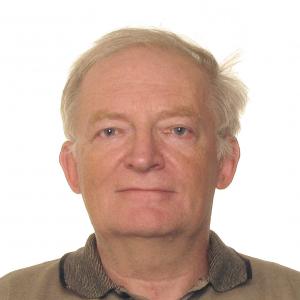
Участие в комиссиях
Вице-президент Мировой Ассоциации по защите почвы и вод (World Association of Soil and Water Conservation, WASWAC); член координационных комитетов Международный инициативы по наносам (гидрологическая программа ЮНЕСКО) и Мировой Ассоциации по исследованию эрозии и аккумуляции (World Association Sediment and Erosion Research)
Основные направления научной деятельности
Количественная оценка перераспределения наносов и транспортируемых совместно с ними загрязнителей на малых водосборах и в бассейнах малых рек равнинных и горных территорий, использования традиционных и современных методов для изучения интенсивности экзогенных процессов в горах, применение глобального и Чернобыльского изотопов цезия-137 для датировки отложений в зонах аккумуляции, оценка долевого вклада различных источников наносов в сток наносов рек, изучения формирования и геоморфологических последствий внезапных паводков в горах, оценка глобальной эрозии
Район работ
Европейская территория России, включая Кавказ
Избранные публикации
- Cendrero Antonio, Remondo Juan, Beylich Achim A., Cienciala Piotr, Forte Luis M., Golosov Valentin N., Gusarov Artyom V., Kijowska-Strugała Małgorzata, Laute Katja, Li Dongfeng, Navas Ana, Soldati Mauro, Vergari Francesca, Zwoliński Zbigniew, Dixon John C., Knight Jasper, Nadal-Romero Estela, Płaczkowska Eliza. 2022. Denudation and geomorphic change in the Anthropocene; a global overview. Earth-Science Reviews, vol.233, pp. 1–25.
- V.N. Golosov, A.L. Collins, N.G. Dobrovolskaya, O.I. Bazhenova, Yu.V. Ryzhov, A.Yu Sidorchuk, 2021. Soil loss on the arable lands of the forest-steppe and steppe zones of European Russia and Siberia during the period of intensive agriculture. Geoderma, Vol.381,114678, https://doi.org/10.1016/j.geoderma.2020.114678.
- Petr Tsymbarovich, German Kust, Mikhail Kumani, Valentin Golosov, Olga Andreeva. 2020. Soil erosion: An important indicator for the assessment of land degradation neutrality in Russia. International Soil and Water Conservation Research, Volume 8, Issue 4, Pages 418–429 https://doi.org/10.1016/j.iswcr.2020.06.002.
- Valentin Golosov, Walling Desmond E Erosion and sediment problems: global hotspots.2019. The United Nations Educational, Scientifc and Cultural Organization, Paris, France, 40 с.
- Valentin Golosov, Oleg Yermolaev, Leonid Litvin, Nelli Chizhikova, Zoya Kiryukhina, Gusel Safina Influence of climate and land use changes on recent trends of soil erosion rates within the Russian Plain // Land Degradation and Development. 2018. Vol. 29(8). P. 2658–2667. https://doi.org/10.1002/ldr.3061
- Valentin Golosov, Oleg Yermolaev, Ivan Rysin, Matthias Vanmaercke, Regina Medvedeva, Mariya Zaytseva Mapping and spatial‐temporal assessment of gully density in the middle Volga region, Russia // Earth Surface Processes and Landforms. 2018. Vol. 43. P. 2818–2834. https://doi.org/10.1002/esp.4435
- Valentin Golosov, Collins Adrian L., Qiang Tang, Xinbao Zhang, Ping Zhou, Xiubin He, Anbang Wen Sediment transfer at different spatial and temporal scales in the Sichuan hilly basin, China: Synthesizing data from multiple approaches and preliminary interpretation in the context of climatic and anthropogenic drivers // Science of the Total Environment. 2017. Vol. 598. P. 319-329. https://doi.org/10.1016/j.scitotenv.2017.04.133


